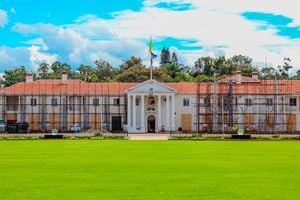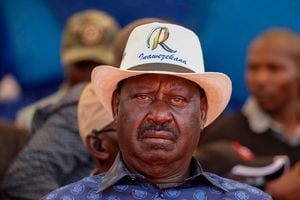Medicine abroad: Doctor or not?

What you need to know:
- When examined on real life scenarios that happen with patients in hospitals, they are unable to apply the knowledge
- They end up undertaking remedial training in our teaching hospitals to bring them up to speed before they can pass the examinations if at all
Samora* couldn’t wait to get home. It had been seven long years since he’d seen his loved ones. All he wanted was a taste of home-made food from his momma’s kitchen.
He wasn’t alone. Four newly graduated doctors who had last seen their homeland in 2012 disembarked from the plane, tired but extremely excited.
Samora lost his father at the age of three, but the community rallied around his disabled mother to support his education. In return, he worked extremely hard at school.
He was crushed when he missed a slot in the local medical schools due to the high competition for the few available slots. He was therefore extremely grateful to get a scholarship to study Medicine in Czech Republic. He had no clue where he was going but he did not mind. All he knew was that his dream to become a doctor was within reach!
Upon arrival back home, Samora embarked on the process of preparing for the Medical Practitioners and Dentists Council (MPDC) examinations, a legal requirement for purposes of registration and licensure to practice as a doctor in Kenya. He consulted his peers who had sat the exams before and was surprised to learn that passing the exam was not guaranteed.
Samora took their advice to heart and spent the next four months in the local referral hospital, acquainting himself with medicine in Kenya.
A brilliant student, he quickly figured out that there were plenty of new things to learn. The basic science of medicine remained the same, however, disease distribution and burden varied immensely.
He was seeing some medical conditions he had only read about for the first time. Even as he sat the examination, he still felt unprepared. He shed tears of joy when he aced the exams on his first try.
Samora is among the lucky few who travel abroad to study medicine and get to have an actual training. This is not the case for many others who blindly leave the country in search of the elusive title.
Despite the increasing number of medical schools in Kenya, the country is still unable to accommodate the number of students seeking to become doctors.
For many years, travelling abroad to study medicine meant studying in the United States of America, the United Kingdom, Canada and Australia, countries we heavily borrowed from when setting up our medical education systems. The graduates easily fitted back into our system, easily passing the pre-internship examinations.
In the 80s, a new wave of medical training schools abroad opened up for our high school graduates, including Russia and India. They appealed to many as they were cheaper and even came with scholarships.
For a while, the pioneer graduates faced a lot of skepticism about the quality of their training but they proved themselves over time. This opened doors to more countries such as the West Indies, Brazil, Cuba, Ukraine, Czech Republic, and Turkey. The latest entrant is China, enrolling almost 100 students annually from Kenya.
This has resulted in a mixed pot of graduates coming back home, making the standardized examination by the Medical Practitioners and Dentists Council (MPDC ) even more important in determining the safety of our patients in the hands of these graduates. A good number of them perform dismally in these examinations, raising concern over how they are trained.
Their first year of training abroad is dedicated to learning the official language of the host country as this is the language of instruction in class!
The real determinant of whether actual training goes on is nested on the level of clinical exposure that the students get. Medical training is an apprenticeship. One cannot learn medicine without encountering real patients.
We learn how to take a medical history, perform a physical examination and procedures on the actual human beings. We appreciate the feel and consistency of human tissue by touching the patients.
Models and manikins cannot replace this. Yet in some of these countries, the students are not exposed to patients at all!
It is therefore no wonder that when the young doctors meet actual patients, they cannot relate. When examined on real life scenarios that happen with patients in hospitals, they are unable to apply the knowledge.
They remain half- baked as doctors, who are not yet safe to handle out patients. The tough lessons learnt here go to parents and sponsors of these young people sent away with such great expectations and come back home with an extremely raw deal.
They end up undertaking remedial training in our teaching hospitals to bring them up to speed before they can pass the examinations if at all. Some never make it, resulting in a wasted decade in training with a degree not worth the paper it is written on.
How then, can we prevent this? Medical training is an extremely expensive affair. If the deal appears to be too good to be true, it probably is.
Before applying to a particular medical school, do your research and find out about the mode of training. Mass scholarships targeting students from developing countries must be viewed with caution, especially if they restrict the students to a particular school. But the true litmus test is whether the country that trains your child would be willing to employ them to treat its own patients!
Dr Bosire is an obstetrician/gynaecologist





